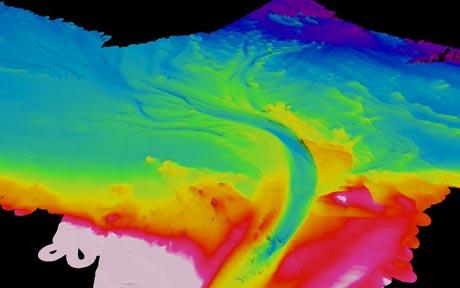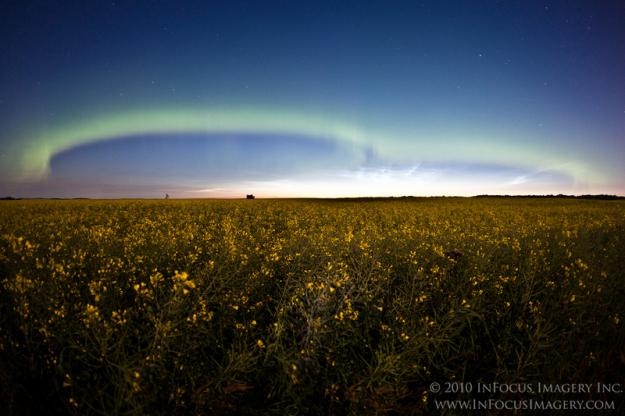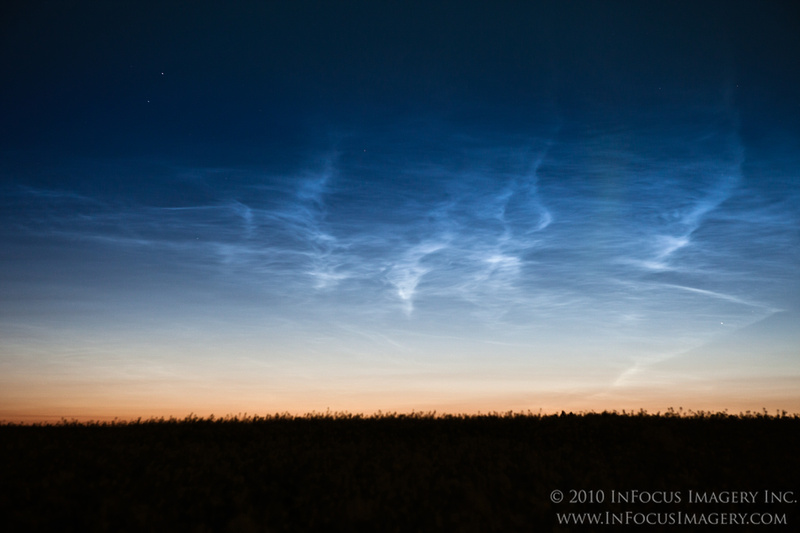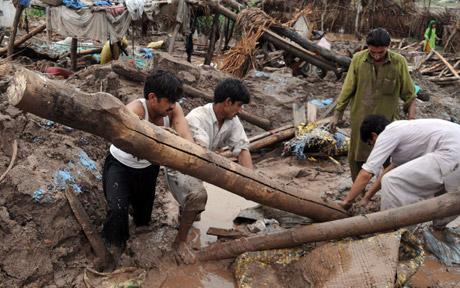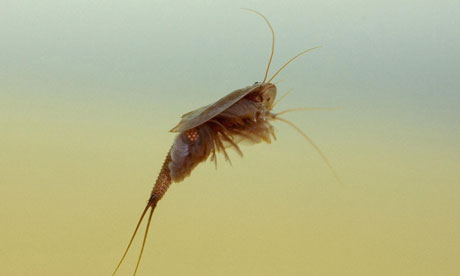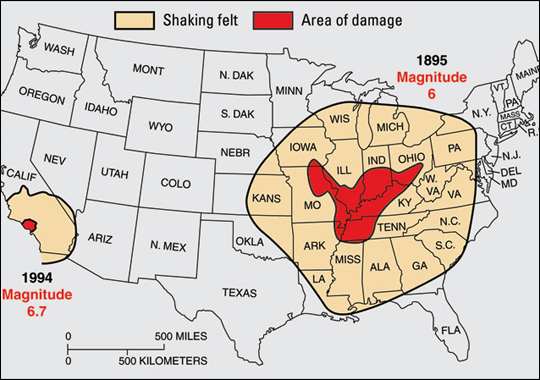
© USGSNew Madrid's Violent Past
In the central and eastern U.S., earthquakes are felt over a broader area than comparable-size quakes in the western United States because of differences in geology. Although only of magnitude 6, the earthquake that occurred near Saint Louis in 1895 affected a larger area than the 1994 magnitude 6.7 Northridge, California, quake, which caused $40 billion in damage and economic losses and killed 67 people. A repeat of the 1895 earthquake could prove disastrous for the Midwest, where structures are not as earthquake resistant as those in California.
The risk of earthquakes in the U.S. Midwest may be more widespread than geologists have believed, but a "big one" may be less likely at Missouri's New Madrid fault, researchers said on Wednesday.
They found that rivers that swept away sediments at the end of the last ice age could have triggered a series of large earthquakes that began in 1811 in the New Madrid seismic zone.
This suggests that these fault segments are unlikely to fail again soon, but the same process could trigger earthquakes on nearby fault segments, they reported in the journal Nature.
When glaciers melted at the end of the last ice age between 16,000 and 10,000 years ago, monstrous rivers formed and washed away 40 feet of sediment.
Eric Calais of Purdue University in Indiana and colleagues developed a computer model that shows this could have caused the crust underneath to slowly lift and cause the magnitude 7 and greater quakes that shook the Missouri-Arkansas border region in 1811 and 1812, causing the Mississippi River to run backwards and ringing church bells as far away as Boston.
"Models indicate that fault segments that have already ruptured are unlikely to fail again soon, but stress changes from sediment unloading and previous earthquakes may eventually be sufficient to bring to failure other nearby segments that have not yet ruptured," Calais and colleagues wrote.
Areas such as Charleston, South Carolina, hit by a highly damaging quake in 1886, may be susceptible to more activity cased by the processes described by Calais, geophysicist Mark Zoback of Stanford University in California wrote in a commentary.
Scientists have a good understanding of earthquakes at major faults where one of the Earth's tectonic plates touches another one -- such as in California, Indonesia and Haiti.
Less well understood are intraplate faults -- faults in the middle of a plate -- like the New Madrid fault.
